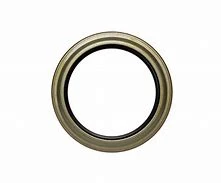Crankshaft Oil Seal | High-Quality Engine Seals for Reliable Performance
Understanding the Crankshaft Oil Seal An Essential Component of Engine Functionality
The crankshaft oil seal is a crucial component found in internal combustion engines, acting as a barrier to prevent engine oil from leaking out of the crankcase. This small yet vital part plays an essential role in maintaining proper engine lubrication and efficiency. Understanding its function and importance can help vehicle owners ensure their engines remain in optimal condition.
The primary function of the crankshaft oil seal is to hold engine oil in the crankcase while allowing the crankshaft to rotate freely. Positioned at the front and rear of the crankshaft, these seals are designed to withstand high temperatures and pressures, providing a tight seal to keep oil contained. When the crankshaft spins, its movement creates a dynamic operating condition, and the oil seal must remain intact to prevent any oil from escaping.
Over time, exposure to heat, pressure, and engine vibrations can lead to wear and tear on the oil seal, resulting in oil leaks. Signs of a failing crankshaft oil seal include oil spots on the ground beneath the vehicle, an increase in engine oil consumption, or the presence of oil on the rear of the engine block. Addressing these issues promptly is crucial, as an oil leak can lead to severe engine damage due to insufficient lubrication.
crankshaft oil seal

Replacing a crankshaft oil seal typically involves a comprehensive process, including removing the timing belt or chain, and possibly removing the engine’s front cover. This replacement should ideally be performed by a professional mechanic, as incorrect installation can lead to further leaks and engine inefficiency. Regular maintenance and inspections can help identify potential problems before they escalate, ensuring the longevity of the engine.
In addition to its protective role, the crankshaft oil seal contributes to overall engine efficiency. A well-functioning oil seal helps maintain the appropriate oil pressure, which is vital for lubricating engine components and reducing friction. This efficiency can lead to improved fuel economy and reduced emissions, aligning with modern environmental standards.
In summary, the crankshaft oil seal is an essential component that plays a critical role in the functionality and efficiency of an internal combustion engine. Regular inspections and prompt replacements when necessary can help vehicle owners prolong the life of their engines and maintain optimal performance. Understanding this small yet significant part of your vehicle can lead to better maintenance practices and ultimately, a more reliable driving experience.
-
Simplifying Oil Changes: A Comprehensive Guide to Oil Drain Plugs and Their Variants
News Aug.04,2025
-
Mastering Oil Drain Maintenance: Solutions for Stripped, Worn, and Upgraded Oil Plugs
News Aug.04,2025
-
Fixing Oil Pan Plug Issues: Leaks, Stripped Nuts, and the Right Replacement Solutions
News Aug.04,2025
-
Everything You Need to Know About Oil Drain Plugs: Sizes, Fixes, and Upgrades
News Aug.04,2025
-
Choosing the Right Oil Drain Plug: A Guide to Sizes, Materials, and Drain Innovations
News Aug.04,2025
-
A Complete Guide to Automotive Drain Plugs: Types, Problems, and Innovative Solutions
News Aug.04,2025
-
The Ultimate Guide to Car Repair Kits: Tools and Essentials Every Driver Should Own
News Aug.01,2025
Products categories















